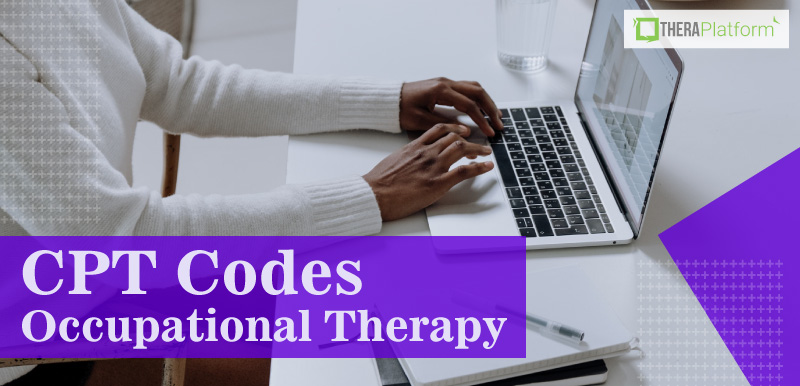CPT code 97140

CPT code 97140 for manual therapy defines techniques involving hands-on manipulation, lymphatic drainage, mobilization, and traction to one or more body areas. This is a timed code, requiring 15 minutes of direct patient care from a qualified professional for each unit.
Summary
- CPT code 97140 is a timed, hands-on manual therapy code used by occupational and physical therapists for techniques like joint mobilization, lymphatic drainage, and soft tissue manipulation to improve function or reduce pain.
- To receive reimbursement, therapists must document treatment duration, the specific technique and body area treated, and demonstrate medical necessity with functional goals tied to the intervention.
- Therapists must avoid billing errors by not confusing 97140 with CPT code 97110 (therapeutic exercise), and should follow CMS guidelines for compliance, including updates every 10 visits and justification for extended care. Enrolling in an insurance billing course for therapists can help providers enhance their knowledge.
- By leveraging an EHR like TheraPlatform for efficient documentation and claim submission, therapists can tackle billing with ease.
→ Click here to enroll in our free on-demand Insurance Billing for Therapists video course [Enroll Now]
Manual therapy techniques play an important role in helping people manage pain, and improve range of motion for participation, such as an occupational therapist performing lymphatic drainage to someone’s arm and neck to progress towards independent hair washing and dressing.
Let’s look at some of the basic requirements and considerations for using this code in practice to help you code correctly and get reimbursed for your time.
Streamline your insurance billing with One EHR
- Claim batching
- Auto claims
- Automated EOB & ERA
- Real-time claim validation
- Real-time claim tracking
- Aging and other reports

What is CPT code 97140?
The American Medical Association (AMA) defines CPT code 97140 as use of Manual therapy techniques to one or more regions for each unit of 15 minutes. The AMA also specifically defines manual therapy as procedures involving manipulation, mobilization, lymphatic drainage techniques, and manual traction. These are hands-on procedures used to assess, measure, or manipulate areas of the body to improve functional performance or manage pain.
To bill for this code, therapists should have related goals for how manual therapy will improve function of the specific body region to accompany medical necessity of procedures billed.
Additional coverage criteria include documentation to support clinical necessity such as the clinical indication of billed techniques and why skilled therapy techniques are needed. A description of the exact technique used (joint manipulation, myofascial release, etc.), location (shoulder, elbow, hand, etc.), and time required as CPT code 97140 is timed. Your note should also include a start and end time for the total session to accompany your charges.
Watch this video to learn common insurance billing struggles and solutions
→ Start My Free Trial
→ Start My Free Trial
CPT code 97140 and occupational therapy
Occupational therapy services covered by CPT code 97140 include joint mobilization, soft tissue mobilization, manipulation, and lymphedema techniques often seen in but not limited to outpatient settings.
Another important example of manual therapy procedures used in occupational therapy is use of lymphatic drainage which aims to reduce lymphedema of a limb by redirecting fluid to more functional pathways to reduce edema.
Manual therapy is considered “hands-on” therapy, so the therapist applies a skilled technique to address a specific physical condition. Many modalities are not considered “hands-on” techniques and are not billed as manual therapy but may be billed in the same session.
CMS and other insurance payors offer guidelines on their website for current restrictions when billing for CPT code 97140. Each payor may request slightly different billing restrictions, so it is best to read the information provided by your insurance payor for billing specifics.
Occupational therapy plans can utilize CPT code 97140 to enhance functional skills such as range of motion and strength to better perform activities of daily living (ADLs). You will find manual therapy opportunities in every setting as manual therapy techniques may be beneficial for many diagnoses including neurologic, developmental, orthopedic, and general age-related conditions.
Practice Management + EHR + Telehealth
Mange more in less time in your practice with TheraPlatform

Maximizing reimbursement for CPT Code 97140
Common reimbursement issues may include not reporting measurable outcome data, and incomplete documentation. CMS requires clear documentation for why patients may require continued skilled services past 12-18 visits and why services need to be performed in a clinical environment.
CMS also states that if a patient has demonstrated independence with self-management techniques, that the same techniques should not be counted toward skilled therapy and not be performed in a clinical environment once a patient has demonstrated independence with skills such as self-range of motion.
What is the difference between CPT code 97140 and CPT code 97110?
CPT code 97140 is used for skilled manual therapy techniques with no additional activities simultaneously occurring. If therapeutic, resistive, or strengthening exercises are included in combination with manual techniques, these activities fall under CPT code 97110, therapeutic exercise.
Key documentation elements for reimbursement success include ensuring outcome measures, progress toward goals, medical necessity, which technique was used, and where and how the patient responded are included in your documentation.
CMS also states that documentation should include patient education on how to self-manage the condition without the need for skilled intervention as necessary. When extending treatment beyond the initial plan of care, it should be documented why the patient continues to require skilled intervention for manual therapy. According to the Centers for Medicare and Medicaid Services' Billing and Coding resources, additional documentation is required every ten visits, listed in table below.
Recommended initial documentation and after every 10 visits |
|---|
Location - which area is being treated and response after treatment |
Technique - Specific technique used, soft tissue mobilization, joint mobilization, traction, manipulation, or lymphatic drainage |
Objective and Subjective measures related to services performed and relation to functional performance |
Lymphatic Drainage requires additional supportive documentation including medical history related to onset, exacerbation, comorbidities, prior treatment for condition, patient, or caregiver ability to follow self-management techniques, functional limitations, prior level of function (PLOF), limb measurements and description of skin condition. |
CPT Code 97140 and compliance
Compliance regulations include maintaining required certifications for manual therapy techniques and keeping a record of continuing education to show proof of credibility in the case of an insurance audit. A qualified professional should also perform manual techniques, usually an occupational therapist, physical therapist, or therapy assistant, who should provide clear instructions on how and where to carry them out.
Potential compliance risks include not documenting patient pain level, measurements post manual therapy treatment, and how manual therapy procedure relates to patient goals. Strategies to ensure compliance include ensuring you have clear documentation and supportive goals stated in the patient’s active plan of care.
Practice Management + EHR + Telehealth
Mange more in less time in your practice with TheraPlatform

In summary, CPT code 97140 allows therapists to bill for timed, hands-on, manual therapy as part of a patient’s care plan. Manual therapy has a place in occupational therapy treatment plans as manual techniques can enhance functional range of motion and manage pain for improved participation in daily tasks. Fortunately, CMS, and other insurance payors, provide additional guidelines to help you plan for billing with this code.
How EHR and practice management software can save occupational therapists time with insurance billing
EHR with integrated billing software and a clearing house, such as TheraPlatform, offers significant advantages to occupational therapists in creating an efficient insurance billing process. The key is minimizing the amount of time dedicated to developing, sending, and tracking medical claims through features such as automation and batching.
What are automation and batching?
- Automation refers to setting up software to perform tasks with limited human interaction.
- Batching or performing administrative tasks in blocks of time at once allows you to perform a task from a single entry point with less clicking.
Which billing and medical claim tasks can be automated and batched through billing software?
- Invoices: Create multiple invoices for multiple clients with a click or two of a button or set up auto-invoice creation, and the software will automatically create invoices for you at the preferred time. You can even have the system automatically send invoices to your clients.
- Credit card processing: Charge multiple clients with a click of a button or set up auto credit card billing, and the billing software will automatically charge the card (easier than swiping!)
- Email payment reminders: Never manually send another reminder email for payment again, or skip this altogether by enabling auto credit card charges.
- Automated claim creation and submission: Batch multiple claims with one button click or turn auto claim creation and submission on.
- Live claim validation: The system reviews each claim to catch any human errors before submission, saving you time and reducing rejected claims.
- Automated payment posting: Streamline posting procedures for paid medical claims with ERA. When insurance offers ERA, all their payments will post automatically on TheraPlatform's EHR.
- Tracking: Track payment and profits, including aging invoices, overdue invoices, transactions, billed services, service providers.
Streamline your practice with One EHR
- Scheduling
- Flexible notes
- Template library
- Billing & payments
- Insurance claims
- Client portal
- Telehealth
- E-fax

Utilizing billing software integrated with an EHR and practice management software can make storing and sharing billing and insurance easy and save OTs time when it comes to insurance billing for therapists.
Resources
TheraPlatform is an all-in-one EHR, practice management, and teletherapy software built for therapists to help them save time on admin tasks. It offers a 30-day risk-free trial with no credit card required and supports different industries and sizes of practices, including occupational therapists in group and solo practices.
More resources
- Therapy resources and worksheets
- Therapy private practice courses
- Ultimate teletherapy ebook
- The Ultimate Insurance Billing Guide for Therapists
- The Ultimate Guide to Starting a Private Therapy Practice
- Insurance billing 101
- Practice management tools
- Physical therapy billing
- PT billing units



